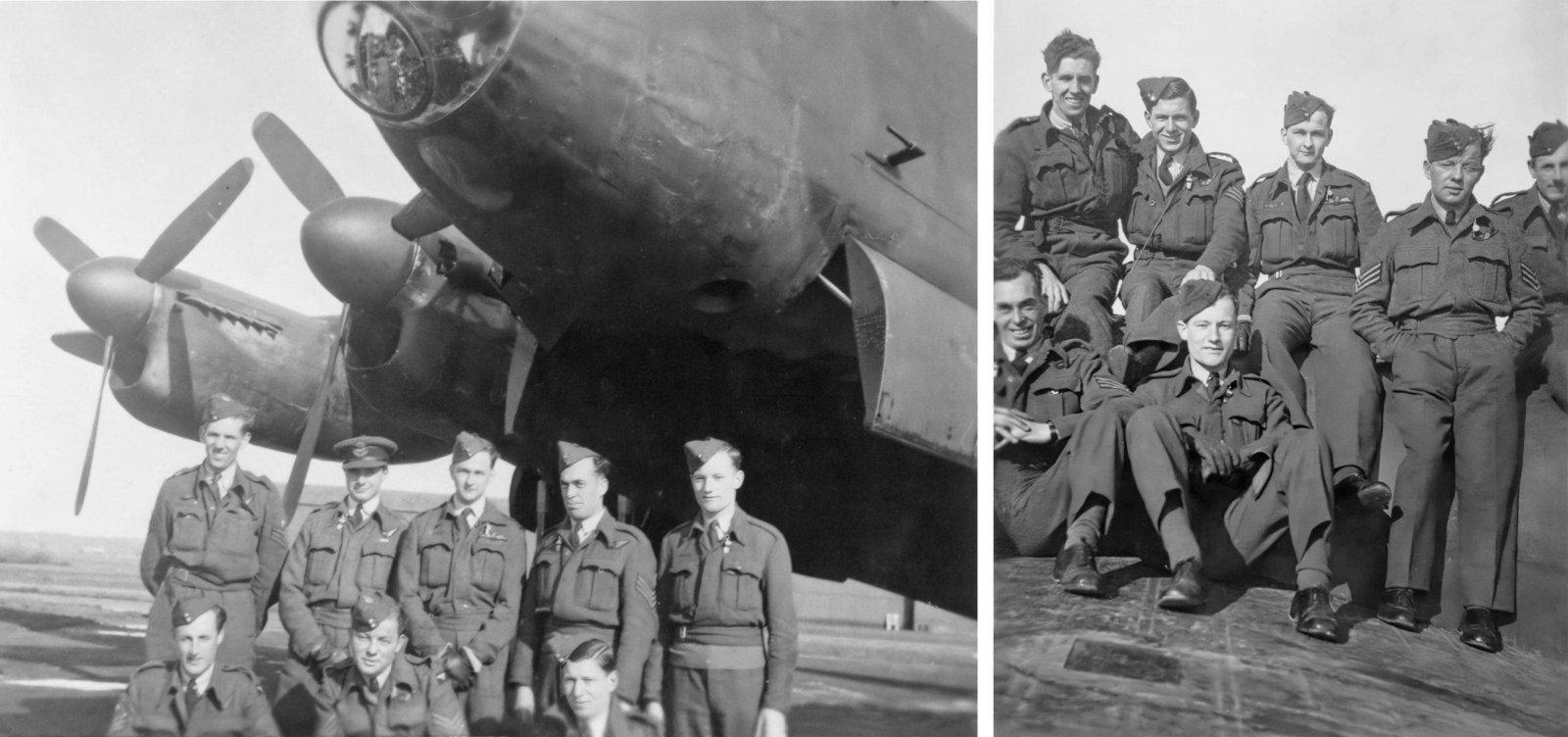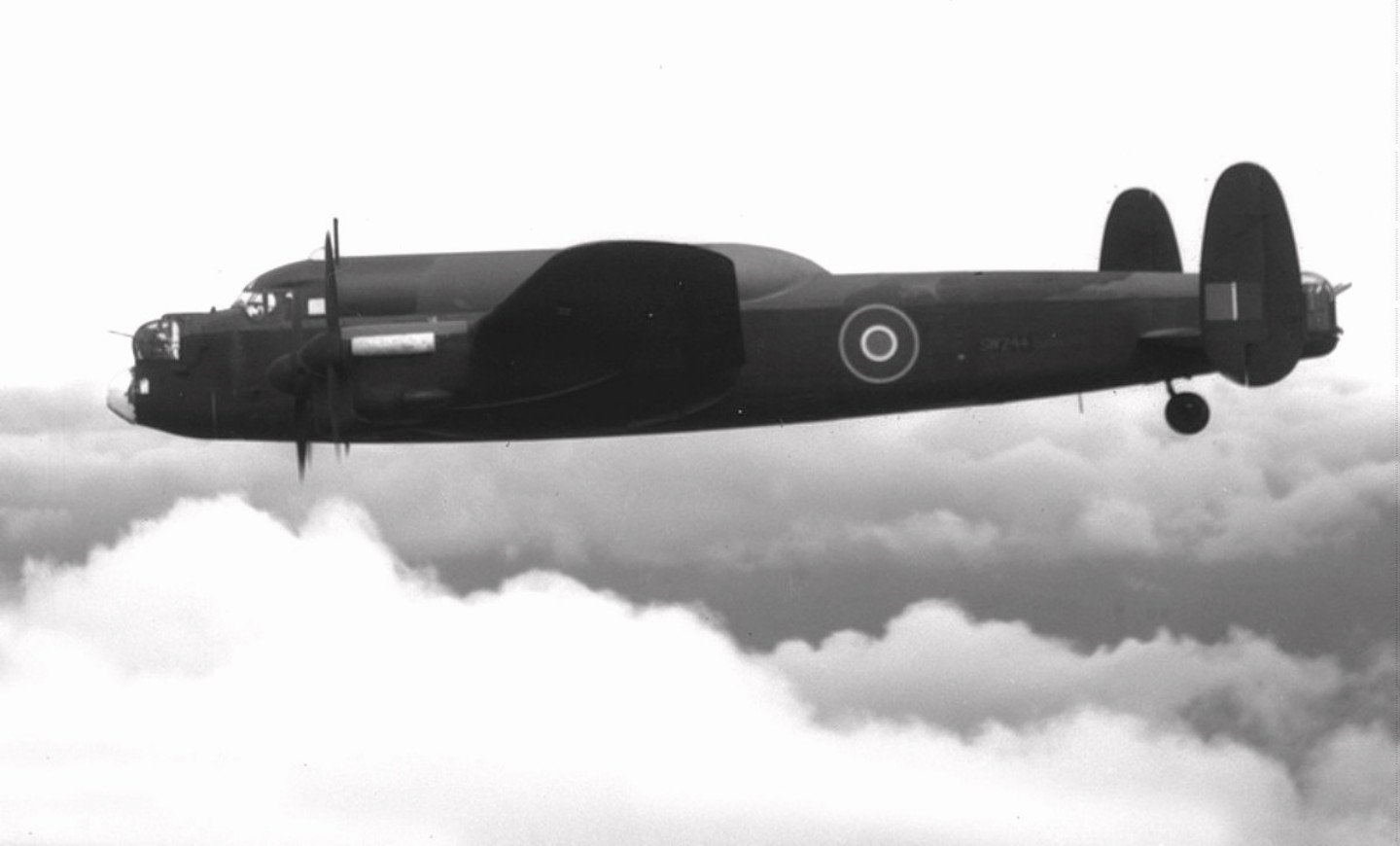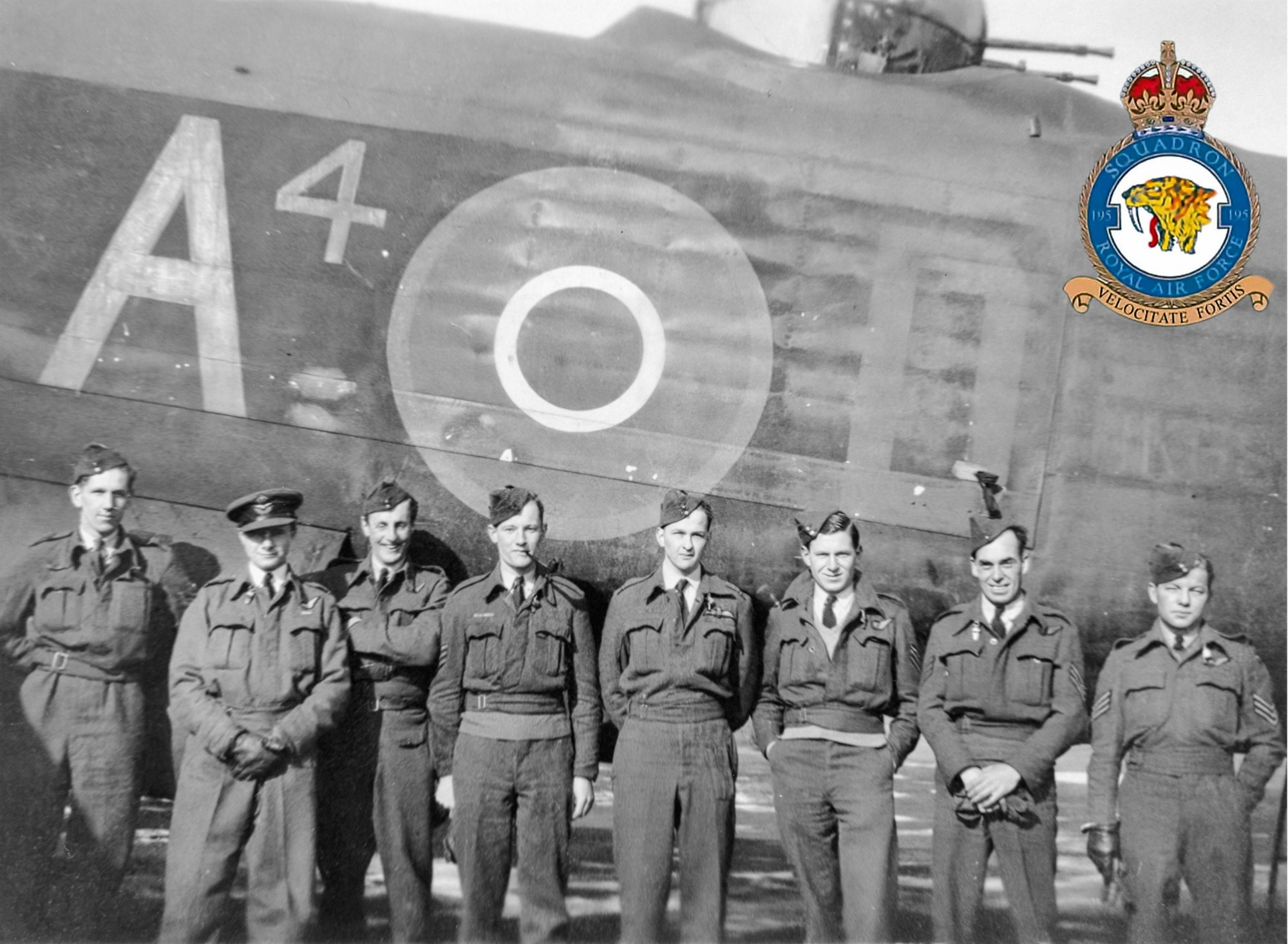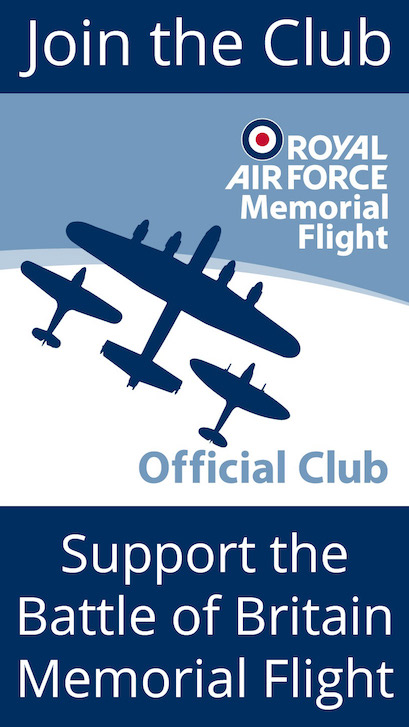Members Remember: Sgt Bill Richards – Lancaster wireless operator
Header Image: Sgt Bill Richards’ 195 Sqn Lancaster crew at RAF Wratting Common, Cambridgeshire, in early 1945. Bill is standing fourth from left with a pipe in his mouth. It appears that he chose not to wear his winged flying badge and only wore sergeant stripes on the right arm of the battle dress tunic he wore on ‘ops’, presumably for escape and evasion purposes. As aficionados of Bomber Command will notice, there are eight airmen rather than the usual seven in this crew. This is because some of the 195 Sqn Lancasters, including the crew’s regular aircraft, HK687 ‘A4-D’, were fitted with a Frazer-Nash F.N.64 ‘under-gun’ turret under the rear fuselage, in the location sometimes occupied by an H2S radar dome. The power-operated, periscope-sighted F.N.64 turret was manned by a ‘mid-under’ gunner on occasions when a spare gunner was available. The mid-under gunner here is probably Fg Off C Bass (second from left) because the only other officer in the regular seven-man crew was the pilot, Fg Off Ken Hamilton (fifth from left).
Continuing the ‘Members Remember’ series, in which we offer Club members the opportunity to tell the stories of any relatives who served with the RAF during the Second World War, here we have the story of Lancaster wireless operator Sergeant Bill Richards, father of Club member Stuart Richards. Stuart takes up the story
“My father, Bill Richards, rarely talked about his time in the RAF other than small snippets. He joined up after his father was killed when HMS Diamond was sunk off Crete in April 1941. Bill wanted to train as a pilot, but because of a four to five month wait he opted to train as a Wireless Operator/Air Gunner. He had a distinct advantage because he could already transmit 28 words per minute using Morse Code, having been taught by his father. He passed out in August 1943 and was then posted to RAF Castle Kennedy in Scotland to continue his training. On a training flight in an Anson, the aircraft crash-landed in the sea and he suffered serious injuries. Later in life, that incident permitted him to become a member of the Goldfish Club.
After completing his operational and crew training on Wellingtons and Stirlings, and converting to the Lancaster at the Lancaster Finishing School at Feltwell, he and his crew, captained by the then Flight Sergeant Ken Hamilton, were posted to join the newly re-formed 195 Squadron in October 1944, initially at RAF Witchford until the unit moved to Wratting Common, Cambridgeshire in November. He flew his first operational sortie during daylight on 28th October 1944, over Flushing, in the Netherlands, dropping one 8,000-lb HC ‘super-cookie’ bomb and five 1,000-lb bombs. Other raids followed on a regular basis, both by day and by night, with many to targets in the Ruhr. By early November the crew’s regular aircraft had become Lancaster HK687 ‘A4-D' [Ed: This aircraft was fitted with the F.N.64 power-operated periscope-sighted ‘mid-under’ gun turret with two Browning 0.303 machine guns. HK687 survived the war and was scrapped in 1947.] The crew flew ‘A4-D’ on the infamous Dresden raid on 13th February 1945. Bill’s 38th and final mission in Europe was completed on 4th April 1945 over Merseburg.

Right: In this photo of the normal seven-man crew, Bill is seated front right.
His war was not over though, and he and his crew were posted to South East Asia Command on a secret and urgent task. Arriving in Mauripur, India, they joined 1577 (Special Duties) Flight. The crew was involved in testing a special ‘Very Long Range’ Lancaster, SW244, with their first flight in it on 4th August 1945. After Avro had proposed an extra-long-range Lancaster, two airframes – HK541 and SW244 – were modified to carry a dorsal ‘saddle tank’ with an additional 1,200 gallons of fuel, extending from a modified cockpit canopy to a point just forward of where the mid-upper turret would have been, giving the aircraft a hump-back appearance. The two aircraft were flown to India to investigate the feasibility of operating in high temperatures at a maximum take-off weight of 72,000lb. Initial trial results were promising; with a full load of 3,154 gallons of fuel, a range of 3,470 miles was achieved, carrying a simulated war load of 6,000lb, with 18 hours in the air. However, the stability of the aircraft was affected, the handling characteristics were poor and, with the war in the Far East ending and the requirement being superseded, the concept was abandoned.

My father’s wartime logbook shows a total of 597 hours and 50 minutes, flown in a total of 11 different aircraft, and including 38 missions over enemy territory in Europe. On leaving the RAF he became a member of the Royal Observer Corps and later, as Adjutant with 1165 Squadron ATC Oswestry, he was granted a commission. He was also a member of the local branch of the RAF Association and in 1989 became heavily involved in the placement of a memorial to all those involved at RAF Wratting Common, where 195 Squadron had been based. A book of remembrance was presented at a memorial service in 1989, with the names of the 260 aircrew who died flying on operations with the squadron between May 1943 and May 1945. Bill passed away on 6th December 2005 and throughout his life he never forgot those crew members who never came back.”
Thank you to Stuart for his father’s story which has some very unusual facets. If any Club member would like to submit a story about a relative who served with the RAF during the Second World War for the ‘Members Remember’ series, we would be pleased to receive it. The only proviso for a story to be published in the Club newsletters is that we must have at least one photograph of the person in wartime to illustrate it. Simply email [email protected]







